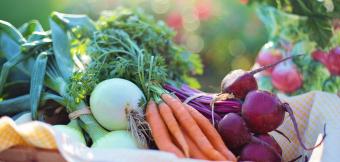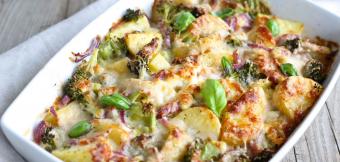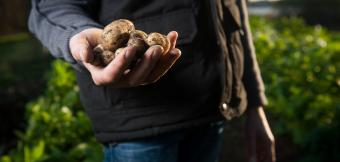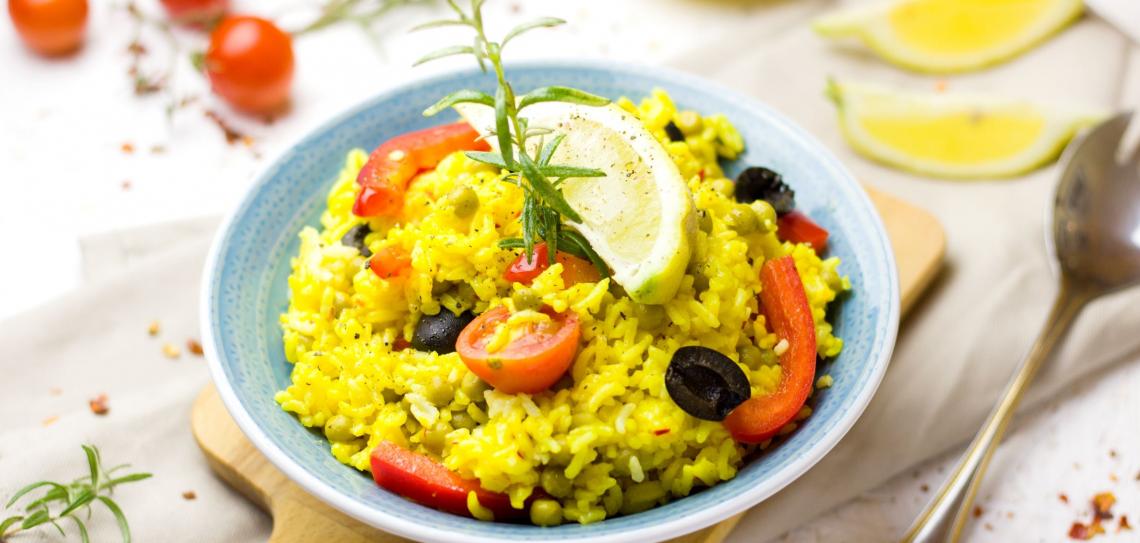
Eat less meat and dairy
One of the most powerful actions you can take to reduce your climate impact. Meat and dairy have a very high carbon footprint, especially beef and lamb. Globally, the spread of beef farming is causing huge deforestation. Reduce your meat consumption, and consider vegetarian or vegan options.
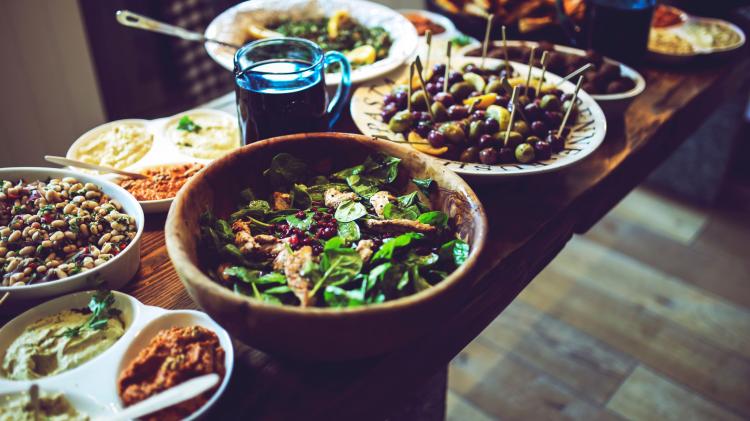
Eating less meat and dairy is one of the most powerful actions you can take to reduce your climate impact. The Environmental Working Group have calculated the carbon footprint of one KG of many everyday foods in the U.S. Looking at the huge emissions for every kg of lamb, beef, cheese and chicken you can see why 10-15% of global climate changing gases are from meat and dairy production.
The Greenhouse Gas Emissions of Everyday Foods: Kg CO2e per Kg of food
| Lamb | 39.2 |
| Beef | 27 |
| Cheese | 13.5 |
| Chicken | 6.9 |
| Potatoes | 2.9 |
| Yoghurt | 2.2 |
| Lentils | 0.9 |
Vegan, vegetarian, or omnivore?
Shrink that Footprint worked out the relative climate impact of five different American diets. Each year, a meat lover's diet creates around 3.3 tonnes of CO2e, an average diet 2.5 tonnes, a beef-free diet 1.9 tonnes, a vegetarian diet 1.7, and a vegan diet 1.5. If cheese has a greater CO2e impact than chicken, why does the vegetarian diet have a relatively low carbon footprint? Because it eliminates beef and lamb, and because very few dinners include a block of cheese the size of a chicken. Importantly, their research also shows that eliminating food waste would reduce the CO2e impact of all five diets by a third. Another study showed that the UK could save 40M tonnes of CO2e a year (averaging 0.7 tonnes per person) by changing its national diet.
There are two key factors missing from these calculations: deforestation and land use. The felling of forest to make way for farming is a huge contributor to climate change, and is mostly for either beef farming or for soya to feed to beef cows. Beef raised on deforested land results in 12 times more greenhouse gases than from natural pasture. When it comes to land use, meat and dairy provide just 18% of calories and 37% of protein globally, but use 83% of farmland. Without meat and dairy consumption, global farmland could be reduced by more than 75% and still feed the world. These are two strong reasons to stop eating beef and consider a vegan or vegetarian diet.

Why are beef, lamb and cheese so bad for climate change?
Sheep and cows are ruminant animals. They can digest grass, but release methane as a by-product, a greenhouse gas 20 times stronger than CO2. There have always been ruminant animals - from North America’s bison to Europe’s wild sheep and goats. So it’s perfectly possible to include farmed ruminants in climate-friendly agriculture.
The problem is that the number of ruminants around the globe is rapidly increasing. Most are no longer fed on grass but on corn, soya or wheat. In the UK, however, most cattle are required to be grass-fed at least some of the time - Pasture for Life guarantees all its meat is from 100% grass fed animals.
Feeding animals on crops that humans can eat is a very inefficient way of producing food. So on the one hand it’s OK to have a little grass-fed beef, lamb and dairy in your diet, but on the other hand eating these foods in large quantities is a real problem. If you do eat beef, lamb and dairy, source it well and as locally as possible (see Pay producers properly).
So, a climate friendly diet has three key steps:
- Minimise consumption of beef and lamb snd source it carefully
- Make a well thought through ethical choice about being vegan, vegetarian or omnivore
- Reduce the amount of food you waste, especially meat
Alternatives to beef, lamb and cheese
Go for meals that are mostly vegetables but with some chicken or cheese, like stir fries, casseroles and pizza. Try meat substitutes like tofu, quorn or vegetable protein. Search out local seasonal fish or mussels. Eat more nuts and pulses. Experiment with yoghurt or soft cheese instead of hard cheese. There are also many super-healthy options for eating a diversity of salads from local or homegrown sources, for example home-sprouted lentils with steamed, boiled or baked potatoes.
You can still enjoy these foods, but as an occasional treat, not a daily norm. Choose pasture-fed, high welfare local meat and organic cheese. Eating less cheap red meat and cheese will also improve your health and, on average, increase your lifespan.
What about fish?
Seafood is often left out of discussions of a climate-friendly diet, largely because the picture is so complex. Many locally farmed or caught fish have a much lower carbon footprint than agricultural protein; sardines, mackerel, herring and farmed mussels are good examples. However, The Environmental Working Group report gives a Kg of farmed salmon a footprint of 11.9 Kg of CO2e and a Kg of tinned tuna a footprint of 6.1 Kg of CO2e, both very high. Industrial fishing methods are a major issue; big fishing boats burn a lot of fossil fuel, over-fishing of stocks is rife, marine extinctions are growing, and trawling can disturb carbon-rich sea beds. Globally, it is clear we are eating fish at an unsustainable rate that is severely damaging the oceans. If you eat fish, then choose what you eat very carefully. There's no simple answer, but once again vegetables are the best bet for a low carbon diet.
Is vegan always better?
A vegan diet is better for the climate. When rainforest is cut down to grow soya, it’s mainly for feeding to cows, not humans. However, some vegan foods have a high carbon footprint, such as out of season tomatoes and air freighted asparagus, so avoid them. Being vegan isn’t healthy for everyone; if you’re a nursing mother or have an underlying health condition or anaemia, read around the subject first. If you live in a very cold or dry part of the Earth, it may be difficult to get a healthy diet without meat.
And you might simply love meat too much to give it up. If going vegan would make you miserable, then just enjoy well-sourced meat less often instead; eating a limited amount of cheese, pork, chicken and fish and a little grass-fed beef is absolutely compatible with a stable climate.
Picture credits: 1) Einladung_zum_Essen - pixabay.com 2) kaboompics - pixabay.com
Stop eating steak
Go vegan two days a week
Invite the neighbours round for a plant-based pot luck supper
Buy an acre of rainforest

